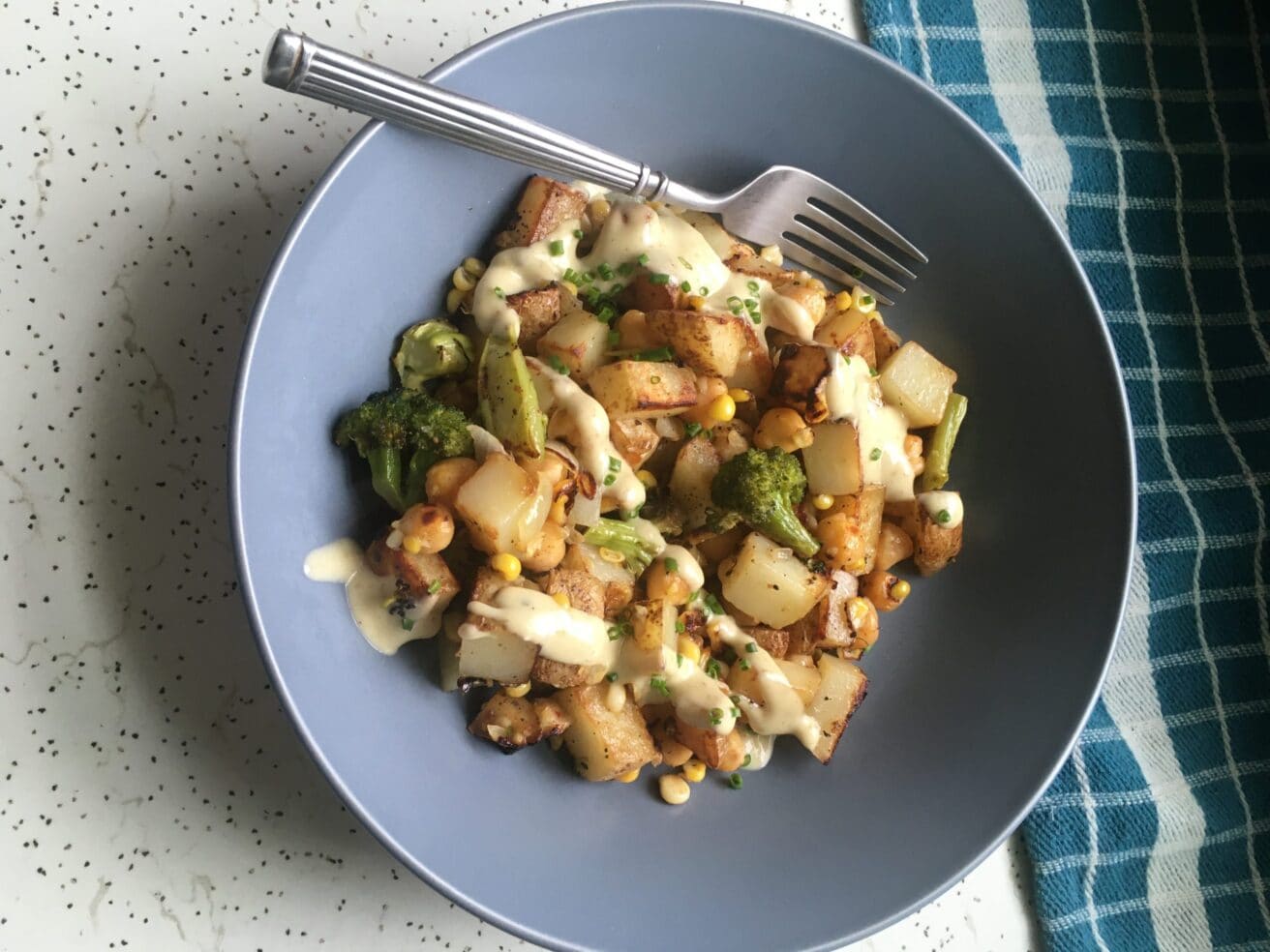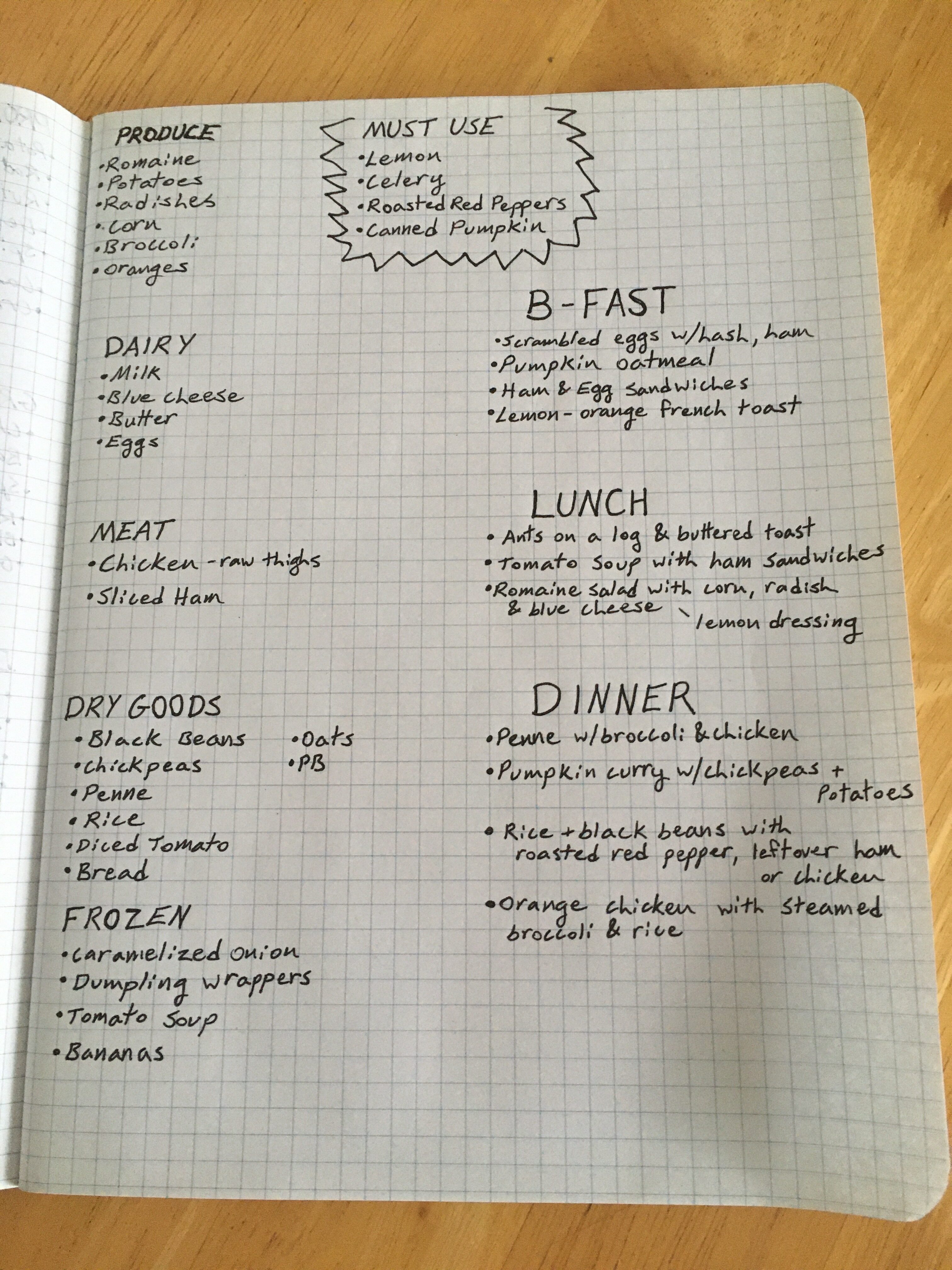Cooking at Home During COVID

Education Coordinator Cathy Pedtke shares some thoughts on how to make the most of cooking at home during these challenging times.
If you’ve been to a grocery store or tried to order a delivery recently, you’ve probably encountered empty shelves, limited availability, or “product unavailable/out of stock” messages. Even the thought of grocery shopping might be stressful: will the store have enough? Will it be crowded? What if I can’t find what I need? Maybe your last trip to the store ended with a random assortment of items you grabbed without a plan, just so you had something to fall back on. This situation is scary and new to most of us, but there are many who deal with similar challenges sourcing food all the time. If your primary source of groceries is a food pantry, you may never know if you can get what’s on your list, and you will often have to get creative with whatever food items you happen to end up with.

Luckily, this situation doesn’t mean you have to settle for boring, tasteless meals. Every mealtime may seem like an episode of Chopped!, but there are lots of strategies to keep cooking healthy, easy, and stress-free, even at a time like this. FRC Emily and I recently got together (virtually, of course) to discuss how we’ve been feeding ourselves throughout these challenging times, and to share the strategies that have helped us most.
First, take stock of what you do have. Now is the time to pull everything from the back of the cupboards, plumb the depths of your fridge, and explore the darkest corners of your freezer. You may find a lot more variety than you’d expect, and some exciting forgotten ingredients: I found a bag of dried mushrooms in the back of my pantry, and caramelized onions I’d frozen last fall – both flavor bombs that can be used in many different ways. While you take stock, identify items that should be used ASAP: Emily keeps her “eat first” ingredients in a specific corner of the fridge to prevent anything from going to waste. With fewer things to write down in your planner these days, try devoting a square of space to plan your meals for the day, or at least the ingredients you want to incorporate into your next meal.

Next, kick off a little creativity! If you’re an organized list-fanatic like me, it may help to write out a quick inventory of what you have: looking at a list of ingredients helps me make connections I might not think of otherwise. Be sure to include which items should be used first: This is your Chopped! basket challenge! From there, see what meals come to mind and jot down ideas to come back to.
If at this point you’re thinking “being on Chopped! every night is my worst nightmare,” we get it. Most people aren’t a bottomless well of kitchen creativity, and a lot of us are still working, taking care of children, and just trying to put something nourishing on the table. To keep herself stocked with easy meals while still out on the road every day, Emily utilizes batch cooking for versatile ingredients like rice, veggies, and even chili. By cooking a large batch of something when you have time, the first step of several other meals is already covered. For instance, a large batch of chili for Sunday dinner can then become a meat sauce over pasta, topping for a loaded baked potato, and incorporated into Taco Tuesday (it works for burritos or quesadillas, too). A big pot of rice can be the side of several meals, turned into fried rice with other leftovers, or even transformed into rice pudding for dessert. If you’re not used to cooking regularly, knocking out the basics in big batches can save you time and take a lot of stress out of creating meals.
Now, you could cook that big batch of rice and then eat plain rice for the next five meals, but most of us are used to a lot more variety. If you’re missing the world of endless lunch options and restaurant dinners, it can be tough to cook all your meals at home. To beat the boredom, we recommend taking a second look inside your fridge door, and using condiments to layer new flavors onto familiar dishes. You may have to toss some crusty forgotten bottles, but chances are there’s a collection of mayo, mustard, bbq sauce, hot sauce, pickles, and dressings to work with. Emily whisks together mayo and mustard for a classic sandwich spread (also a great dip for sweet potato fries), while I discovered a creamy Sriracha sauce made with greek yogurt, mayo, Sriracha, garlic powder, and a splash of pickle brine. Caesar dressing or herb vinaigrettes can become great pasta sauces, and a little pickle or sauerkraut can add just the right zing to fried rice.

Finally, my top strategy at a time like this is simply to be kind to yourself. Not every meal will be perfect, and you’ll surely be missing that one ingredient you really wanted. Although I love to cook elaborate recipes and complex meals, my meals lately have been simple and comforting. I’ve probably made ten different versions of potato hash this month, just because it’s easy and warm and delicious. In the face of limited variety and isolation, find ways to satisfy your cravings: if pancakes for dinner sound good, go for it. Get your family involved and make a breakfast-for-dinner feast, or FaceTime dinner prep with the people you can’t visit. Let the kids (and adults) put ketchup on everything, or create a toppings bar for those pancakes and dig out the sprinkles that are lurking somewhere in the cupboard. We at Lovin’ Spoonfuls believe food should always be a source of joy, health, and comfort. Savor what you have, and don’t worry too much about what’s missing.
Find the recipes for Emily’s Turkey Chili and Cathy’s Potato Hash here!